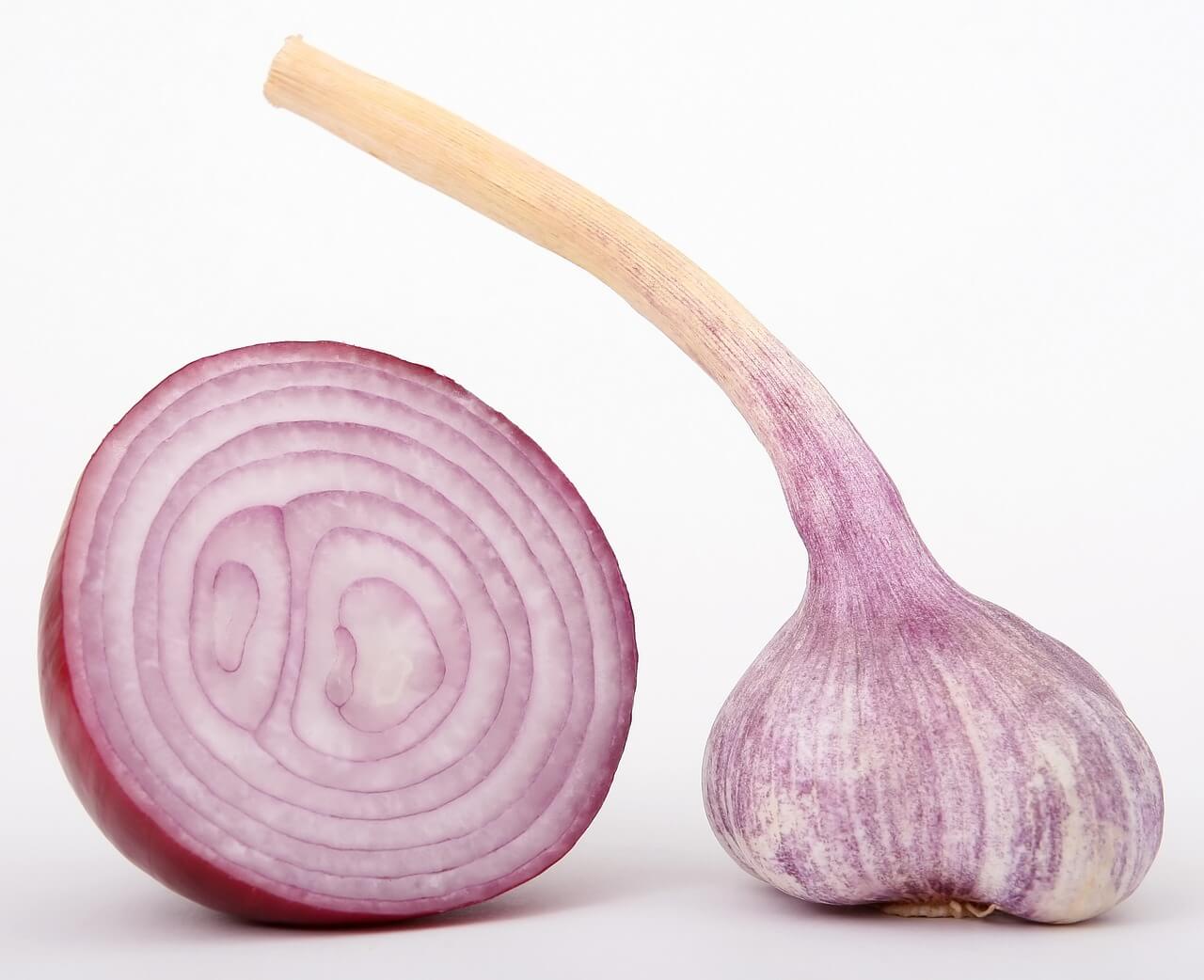Contents
- 0.1 “Flavorful Alchemy: Crafting Culinary Magic with Dried Ground Onions“
- 0.2 Selecting Fresh Onions
- 0.3 Importance of Quality: Elevating Your Culinary Creations
- 1 Preparing Onions for Drying
- 2 Drying Methods
- 3 Checking for Dryness: Ensuring Optimal Drying for Superior Quality
- 4 Grinding Dried Onions: Transforming Texture for Culinary Versatility
- 5 Storing Dried Ground Onions
- 6 Using Dried Ground Onions
- 7 Using Dried Ground Onions
- 8 Benefits of Dried Ground OnionsEnhancing Your Culinary Experience
- 9 Tips and Tricks
- 10 Potential Pitfalls to Avoid with Dried Ground Onions
- 11 Conclusion
- 12 FAQs
“Flavorful Alchemy: Crafting Culinary Magic with Dried Ground Onions“
Dried ground onions are a crucial ingredient in kitchens worldwide, offering a convenient and flavorful addition to numerous recipes. The process involves selecting fresh, high-quality onions, washing, peeling, and slicing them into uniform pieces. After drying through methods like sun drying, oven drying, or dehydrating, the onions are ground into a fine powder, ready to be incorporated into various dishes.
Dried ground onions hold immense importance in the culinary world for several reasons. They offer unparalleled convenience, eliminating the need for chopping or slicing onions during meal preparation, saving time and effort in the kitchen. Their powdered form allows for easy and precise measurement, ensuring consistent flavor in recipes.
Dried ground onions have an extended shelf life, allowing them to be stored for several months to a year without compromising their quality or flavor. They possess a concentrated flavor profile that can enhance the taste of various dishes, contributing depth and complexity without the added moisture content of fresh onions.
Dried ground onions also serve as a seasoning substitute when fresh onions are not readily available or practical to use. Their powdered form allows for easy incorporation into recipes without altering the texture or consistency of the dish. In essence, dried ground onions play a pivotal role in enhancing the flavor, convenience, and versatility of various culinary creations.
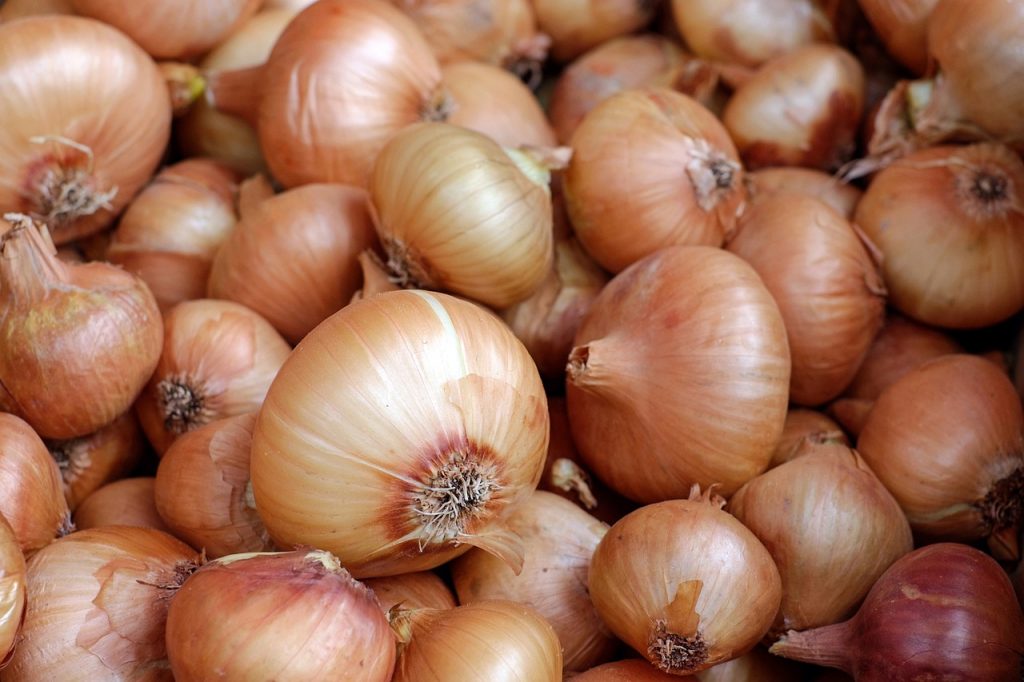
Selecting Fresh Onions
When crafting dried ground onions, it is crucial to choose the right onions based on several criteria. These include firmness, skin texture, weight, absence of sprouting, and aroma. Firm onions indicate freshness and structural integrity, while smooth, intact skins indicate optimal flavor. Heftiness indicates moisture content, while heaviness suggests freshness.
Onions with no visible sprouts are considered fresh, as they may have started to deteriorate. A pleasant, characteristic onion scent signals freshness and flavor potency.
Quality is essential for the outcome of dried ground onion products. High-quality onions have superior flavor profiles, characterized by sweetness, depth, and complexity. Their firm, crisp textures yield superior dried ground onion products, resulting in a uniform grind and consistent powder that enhances visual appeal and flavor integration.
Nutritional value is another important factor. Quality onions retain their nutritional integrity, containing essential vitamins, minerals, and antioxidants even after the drying process. This helps maintain the health benefits of dried ground onions, including immune support, anti-inflammatory properties, and cardiovascular health benefits.
Lastly, quality onions have an extended shelf life. Properly dried and stored, these onions maintain their flavor potency and freshness for an extended period, allowing you to enjoy their culinary benefits well into the future.
In summary, prioritizing quality when selecting fresh onions is crucial for crafting exceptional dried ground onions. By adhering to these criteria and choosing onions of the highest caliber, you can elevate your culinary endeavors and enjoy the rich flavors and nutritional benefits of this versatile ingredient.
Importance of Quality: Elevating Your Culinary Creations
Quality is a crucial factor in crafting dried ground onions, as it enhances the flavor profile, consistency, and nutritional integrity of your culinary creations. These onions have a rich, nuanced sweetness, robustness, and depth that are preserved throughout the drying process, transforming ordinary meals into culinary masterpieces.
Fresh, high-quality onions contribute to a uniform texture and consistency in the final product, ensuring even distribution and integration into recipes. The absence of blemishes or irregularities in quality onions results in a flawless grind, allowing them to seamlessly blend into sauces, soups, and seasonings, enhancing both visual appeal and taste.
Quality onions retain their nutritional integrity even after the drying process, providing essential vitamins, minerals, and antioxidants that boost overall wellness while adding depth of flavor to your culinary creations. Properly dried and stored, quality dried ground onions can last for several months to a year, allowing you to enjoy their culinary benefits long after the harvest season has passed.
Culinary versatility is another advantage of quality dried ground onions. They offer unparalleled culinary versatility, enhancing a wide range of dishes and cuisines. From everyday meals to special occasions, they elevate every dish they touch, making them an essential pantry staple for home cooks and professional chefs alike.
In conclusion, the importance of quality in crafting dried ground onions cannot be overstated. By prioritizing quality in your ingredient selection, you ensure that your dishes are infused with the rich, robust flavor of the finest dried ground onions, creating memorable dining experiences for yourself and your loved ones.
Preparing Onions for Drying
Washing and peeling the onions
Washing and peeling onions are crucial steps in the process of transforming fresh onions into dried ground form. These steps remove impurities, prevent cross-contamination, enhance flavor, and facilitate the peeling process. Onions carry dirt, debris, or other impurities on their outer layers, which can be removed by washing them thoroughly under cold, running water. This ensures that only clean, pristine onions are used in the drying process, preserving food safety and the quality of the final product.
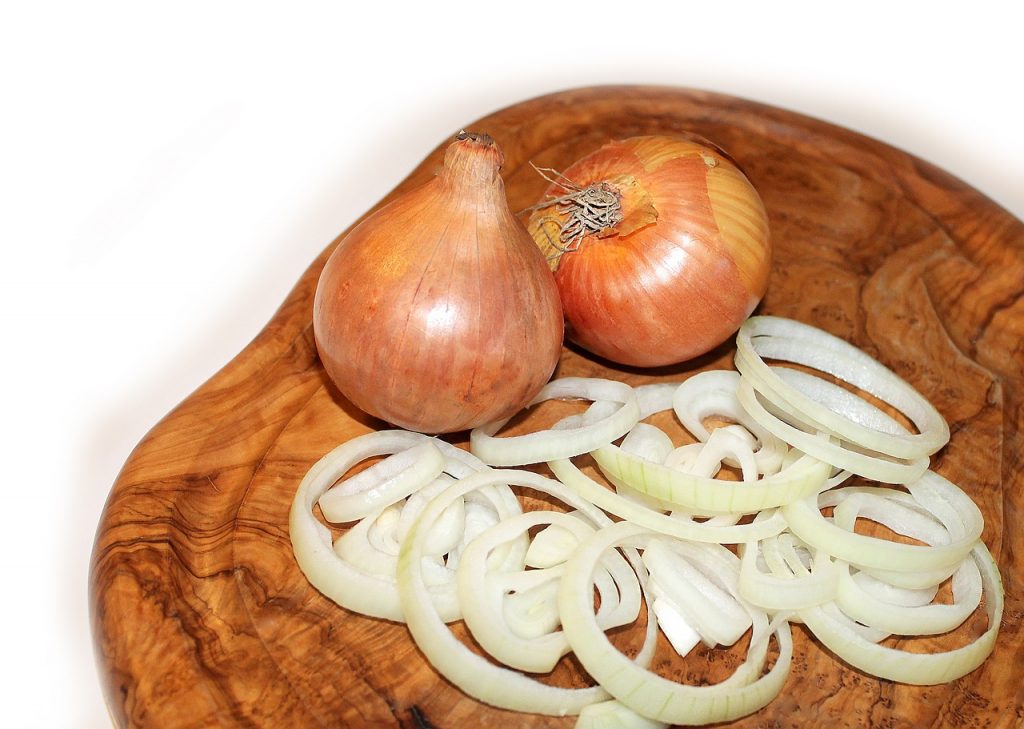
Washing helps mitigate the risk of cross-contamination by removing bacteria or pathogens present on the surface. Proper hygiene practices in food preparation are essential for ensuring the safety and integrity of dried ground onions and the dishes they are used in. By removing any residual dirt or debris, washing ensures that the onions’ natural flavors shine through, contributing to the rich, robust taste of the dried ground onions and the dishes in which they are incorporated.
Effective washing and peeling techniques include:
- Rinsing Under Cold Water: Place the onions under cold, running water and use your hands to gently rub away any dirt or debris from the surface. Rotate the onions to ensure thorough washing, paying special attention to crevices or areas where dirt may be trapped.
- Peeling: Carefully peel away the outer layers to reveal the pristine flesh underneath. Trim off the root end and top of the onion, then score the skin vertically from top to bottom. Carefully peel away the outer layers, working from the scored end towards the root, until you reach the clean, intact layers beneath.
- Discarding Outer Layers: Discard any outer layers that are discolored, damaged, or excessively tough to expose the fresh, tender layers of onion for slicing or chopping in the next steps of the process.
In summary, washing and peeling onions are foundational steps in crafting dried ground onions, ensuring high-quality and delicious dishes.
Slicing or chopping the onions evenly
The process of creating dried ground onions involves slicing or chopping them evenly. This ensures uniform drying, consistent flavor concentration, and ease of handling. Onions that are sliced or chopped to a consistent size dry more evenly, minimizing the risk of under-drying or over-drying. This results in a batch of dried onions with consistent texture and flavor.
Evenly sized onion pieces provide uniform surface areas for moisture evaporation during the drying process, promoting consistent flavor concentration. They can be arranged in a single layer on drying trays or screens without overlapping, maximizing airflow and facilitating thorough drying. Dried ground onions made from evenly sliced or chopped onions have a more uniform appearance, enhancing the visual appeal of the final product.
Effective techniques for even slicing or chopping include maintaining consistent thickness throughout each piece, aiming for uniform shape, precision cutting, using specialized kitchen tools like mandolines or vegetable choppers, and periodically inspecting the pieces for consistency in size and shape. These techniques help maintain uniformity throughout the batch and contribute to a professional culinary presentation.
In summary, slicing or chopping onions evenly is a fundamental step in the process of creating dried ground onions. By prioritizing precision and consistency, you ensure optimal drying, flavor concentration, and aesthetic appeal in the final product. Attention to detail during this stage sets the stage for culinary success and ensures that your dried ground onions meet the highest standards of quality and excellence.
Drying Methods
Sun Drying: Harnessing Nature’s Energy for Superior Flavor
Sun drying is a traditional method of preserving food, particularly dried ground onions. It is an energy-efficient and natural way to remove moisture while maintaining the flavor and nutritional integrity of the onions. To begin, choose a sunny location with ample sunlight, good airflow, and minimal humidity. Lay out clean, dry trays, screens, or racks in the chosen drying area, ensuring they are sturdy and level. Protect the trays from pests by covering them with fine mesh or cheesecloth.
Slice or chop the onions evenly to ensure consistent drying and reach the desired level of dehydration simultaneously. Arrange the onions in a single layer on the drying trays, leaving space between them for adequate airflow. Rotate the trays periodically throughout the drying process to ensure uniform exposure to sunlight.
Monitor the process regularly, checking for signs of dehydration and adjusting the drying time as needed. Inclement weather or high humidity can protect the onions from moisture by covering them with a breathable cloth or moving them to a sheltered location until conditions improve. Bring the drying trays indoors during the evening hours to prevent dew or moisture accumulation overnight.
In conclusion, sun drying is a traditional and environmentally friendly method for preserving onions and other foods. By harnessing the power of the sun, you can create flavorful dried ground onions that enhance the taste of your favorite dishes. This culinary experience celebrates the simplicity and sustainability of traditional food preservation methods, making it a rewarding culinary experience for both novice and seasoned chefs.
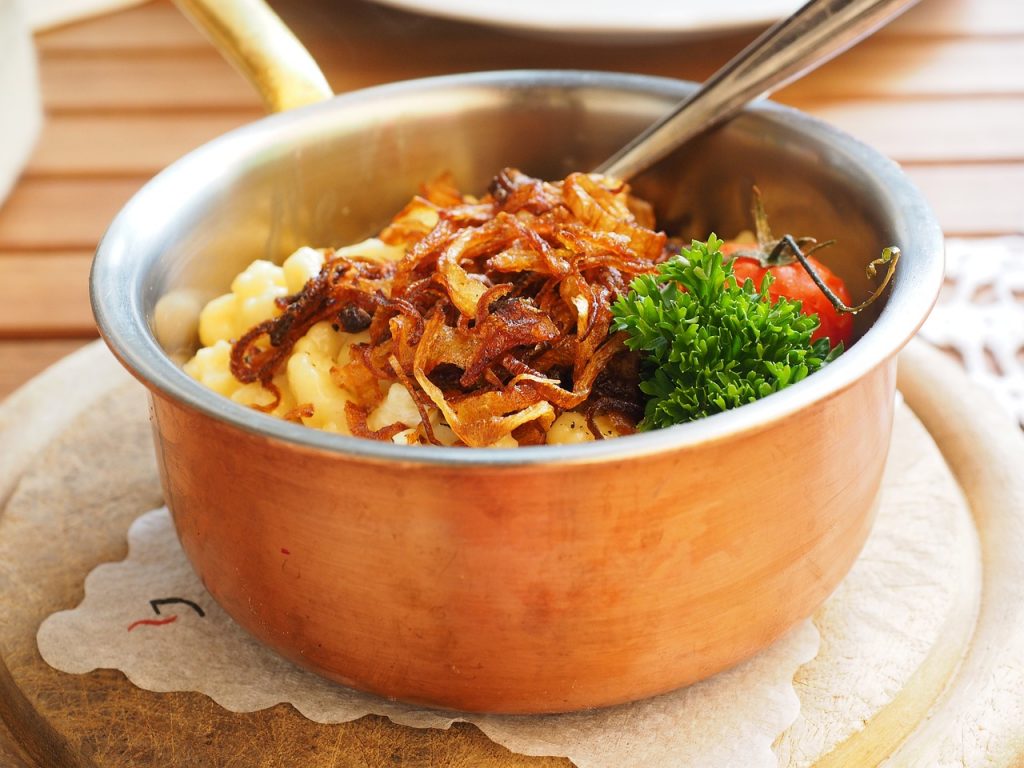
Oven Drying: Precision Preservation in Your Kitchen
Oven drying is a convenient and efficient method for transforming fresh onions into dried ground form, offering precise control over the drying process and consistent results. This method allows for thorough dehydration while preserving the flavor and nutritional qualities of the onions. To prepare the oven, preheat it to a low temperature suitable for drying vegetables, typically between 150°F to 200°F (65°C to 93°C). Position the oven racks to accommodate the drying trays, ensuring adequate airflow around each tray for efficient drying. If your oven features a convection setting, consider using it to enhance airflow and promote uniform drying.
Spread out onions on drying trays by lining baking sheets or trays with parchment paper or silicone mats to prevent sticking and facilitate easy removal of dried onions. Spread them evenly in a single layer, avoiding overcrowding or overlapping, and leave space between trays to allow hot air to circulate freely within the oven. Set the oven temperature to the predetermined low setting, typically between 150°F to 200°F (65°C to 93°C), to encourage gradual dehydration while preserving the onions’ flavor and color.
Monitor the drying time, which can vary depending on factors such as onion size, moisture content, and oven efficiency. Begin checking for dryness after about 4 to 6 hours, rotating the trays halfway through the process for even drying. Adjust as needed until the onions are completely dehydrated and brittle to the touch, with no remaining moisture.
Oven-dried onions add depth and complexity to various dishes, enhancing your culinary repertoire with ease and efficiency.
Dehydrator Drying: Preserving Nature’s Bounty with Precision
Dehydrator drying is a modern and efficient method for transforming fresh onions into dried ground form, offering precise control over temperature and airflow to achieve optimal dehydration while retaining flavor and nutritional quality. Using a dedicated food dehydrator, you can efficiently remove moisture from the onions, resulting in flavorful dried ground onions ready for culinary use.
To prepare the dehydrator, choose a food dehydrator equipped with adjustable temperature settings and adequate drying space to accommodate the quantity of onions you plan to dry. Arrange the drying trays or racks in the dehydrator according to the manufacturer’s instructions, ensuring even spacing between trays for optimal airflow. If necessary, set the dehydrator to the appropriate temperature for drying vegetables, typically between 125°F to 135°F (52°C to 57°C).
Layer the onions on the drying trays, ensuring consistent size and thickness for even drying. Adjust the tray placement and rotate trays as needed during the drying process to promote even drying across all layers.
Adjust the temperature settings on the dehydrator to the recommended range for drying vegetables, typically between 125°F to 135°F (52°C to 57°C). Monitor the onions closely for signs of dehydration, adjusting the temperature or drying time as needed. Onions are ready when they are completely dry and brittle to the touch, with no remaining moisture.
Test for dryness by removing a few pieces from the dehydrator and allowing them to cool to room temperature. If they break easily and do not feel leathery or pliable, they are sufficiently dried.
Dehydrator drying offers a convenient and efficient method for preserving onions with precision and consistency, adding depth and complexity to various recipes.
Checking for Dryness: Ensuring Optimal Drying for Superior Quality
Before storing or grinding dried onions, it is essential to confirm their thorough dehydration to preserve their flavor, texture, and shelf stability. To determine if onions are fully dried, look for signs such as a brittle texture, uniform appearance, cracking or shrinking, absence of stickiness, and a crisp, rustling sound when shaken in a container.
Though drying onions have several benefits, including extended shelf life, enhanced flavor concentration, texture preservation, storage stability, and versatile culinary applications. They have significantly reduced moisture content, inhibiting the growth of mold, yeast, and bacteria, allowing them to be stored for months or even years without spoilage. The removal of excess moisture intensifies the natural flavor of onions, providing a more potent and concentrated taste.
Their texture and mouthfeel are preserved, preventing them from becoming leathery or rubbery, adding texture and depth to culinary creations. Storage stability is also maintained, as dried onions are less prone to clumping or sticking together during storage, allowing for easier handling and portioning.
Versatile culinary applications of dried onions include grounding into powder or rehydrating them for use in various dishes, including soups, stews, sauces, and marinades. Their concentrated flavor and extended shelf life make them a versatile pantry staple for both home cooks and professional chefs.
In summary, checking for dryness is a crucial step in the process of creating dried ground onions, ensuring superior quality, flavor, and storage stability. By confirming that onions are fully dehydrated, you can maximize their culinary potential and enhance the taste of your favorite recipes.
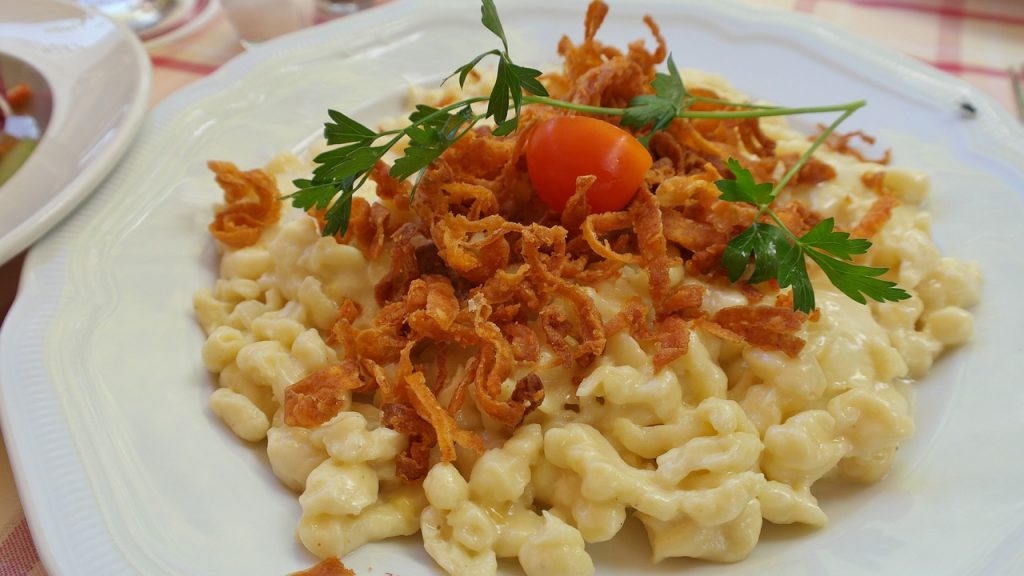
Grinding Dried Onions: Transforming Texture for Culinary Versatility
The process of grinding dried onions into a fine powder is crucial for enhancing their flavor and versatility in culinary creations. To achieve this, you need a spice grinder or food processor with sharp blades and a powerful motor capable of efficiently pulverizing the onions. For an extra fine texture, you can pass the ground onions through a mesh strainer or sieve to remove any larger particles or chunks.
Once ground, dried onions should be stored in an airtight container to maintain their freshness, flavor, and aroma. Choose a container made of glass, plastic, or metal with a secure lid to prevent moisture and air from compromising the quality of the ground onions.
The grinding process involves preparing the grinder, loading the grinder, pulse or grind the onions in short bursts until they reach the desired consistency, and checking for consistency after grinding. If any larger pieces remain, continue grinding until the desired fineness is achieved.
For an extra fine texture, pass the ground onions through a mesh strainer or sieve to remove any remaining larger particles. This step helps create a smoother, more consistent powder suitable for a wide range of culinary applications.
After grinding, transfer the ground onions to an airtight container immediately to preserve their freshness and flavor. Store the container in a cool, dry place away from heat and moisture to maintain the quality of the ground onions for an extended period. Label the container with the contents and the date of grinding to keep track of freshness.
In conclusion, grinding dried onions into a fine powder unlocks their full flavor potential, making them a versatile seasoning for a variety of dishes. With the right equipment and attention to detail, you can create high-quality dried ground onions that add depth, complexity, and richness to your culinary creations.
Storing Dried Ground Onions
Storing Dried Ground Onions: Preserving Flavor for Future Creations
Dryed ground onions are a valuable ingredient in culinary creations, as they maintain their flavor, aroma, and texture for months. Proper storage is essential to preserve the onions’ quality and freshness. To store dried ground onions, choose airtight containers made of glass, plastic, or metal, opaque or dark-colored containers, resealable bags made of food-grade materials, or small batch containers.
Store dried ground onions in a cool, dark place away from direct sunlight, heat sources, and moisture. Ideal locations include pantry shelves, cabinets, or drawers with consistent temperature and low humidity levels. Refrigerating dried ground onions can further extend their shelf life, but it’s recommended to use them within six months of grinding for optimal flavor and aroma.
Avoid freezing dried onions, as it can cause moisture condensation upon thawing, compromising their texture and flavor. It’s best to avoid freezing dried onions unless absolutely necessary. Periodically inspect dried ground onions for signs of spoilage, such as mold growth, off odors, or changes in color or texture. Discard any onions that show signs of deterioration to prevent contamination of the entire batch.
By storing dried ground onions in proper containers and under optimal conditions, you can preserve their flavor, aroma, and texture for months to come, ensuring they remain a valuable ingredient in your culinary repertoire. They can be used as a seasoning, flavor enhancer, or aromatic garnish, adding depth and complexity to various dishes.
Using Dried Ground Onions
Using Dried Ground Onions: Enhancing Flavor in Every Dish
Dried ground onions are a versatile ingredient that enhances the flavor of various dishes. They can be used to season savory dishes, stir them into soups and stews, or bread and coat meats, fish, or vegetables. Their intense flavor disperses evenly throughout the broth, adding complexity and depth to hearty comfort foods.
Dried ground onions can also be used in marinades and spice rubs for meats, poultry, and seafood, as they blend seamlessly with other spices and seasonings. They can also be added to salad dressings and dips for an extra layer of flavor, enhancing the taste of every bite.
When substituting dried ground onions for fresh onions, use a measurement conversion ratio of 1 tablespoon of dried ground onions for approximately 1 medium fresh onion. Rehydrate dried ground onions by soaking them in warm water for a few minutes until softened, then drain any excess water before incorporating them into recipes.
When sautéing dried ground onions, they impart concentrated flavor without the added liquid, so adjust cooking times and techniques accordingly. Dried ground onions can be used interchangeably with fresh onions in most recipes, offering convenience and flexibility in the kitchen. Experiment with different culinary applications to discover new ways to incorporate their rich, savory flavor into your favorite dishes.
By incorporating dried ground onions into your culinary repertoire, you can elevate the flavor of your favorite recipes with ease and convenience. They add depth, complexity, and richness to a variety of dishes, making them a valuable ingredient in any kitchen arsenal.
Using Dried Ground Onions
Using Dried Ground Onions: Elevating Your Culinary Creations
Dried ground onions are a versatile pantry staple that can enhance the flavor profile of various dishes, from soups and stews to marinades and seasoning blends. Their concentrated flavor adds depth and complexity to culinary creations and can be seamlessly substituted for fresh onions in many recipes.
Incorporating dried ground onions into soups and stews infuses them with a rich, savory flavor, while their aromatic flavor complements the savory notes of meat and poultry. Stirred into sauces and gravies, dried ground onions add an extra layer of complexity, making them a popular choice for savory baked goods. They also pair well with herbs and cheese, elevating homemade bread, biscuits, and crackers.
Dried ground onions can be mixed into dips and salad dressings for added depth, such as creamy ranch dip or tangy vinaigrette. They can also be sprinkled into omelets and frittatas for an extra punch of flavor, creating a satisfying breakfast or brunch option.
When substituting for fresh onions, use a conversion ratio of 1 tablespoon of dried ground onions for every medium-sized fresh onion, adjusting the amount based on personal preference and recipe requirements. Rehydration is recommended by soaking dried ground onions in warm water for a few minutes before use.
Dried ground onions do not provide the same texture as fresh onions, so it is important to consider this when substituting, especially in salads or relishes. Adjusting the amount of dried ground onions is crucial, starting with a smaller quantity and tasting as you go to ensure the desired level of onion flavor is achieved without overwhelming other ingredients.
Incorporating dried ground onions into your cooking repertoire opens up a world of culinary possibilities, making them a valuable addition to any kitchen. Experiment with different dishes and recipes to discover the many ways dried ground onions can elevate your cooking to new heights.
Benefits of Dried Ground Onions
Enhancing Your Culinary Experience
Dried ground onions are a versatile and convenient ingredient that can enhance your culinary experience. They offer numerous benefits, including convenience, flavor enhancement, and extended shelf life.
Convenience is the main advantage of using dried ground onions in the kitchen. They can be easily measured and incorporated into recipes without any additional preparation, saving time and effort during meal preparation. Their long shelf life and ease of use make them an indispensable ingredient for busy cooks and culinary enthusiasts.
Flavor enhancement is another significant benefit of dried ground onions. Their concentrated taste adds depth, complexity, and umami richness to soups, stews, sauces, marinades, and more. Unlike fresh onions, which can vary in intensity and flavor depending on factors such as variety and ripeness, dried ground onions offer consistent flavor in every pinch. Their aromatic notes complement a variety of cuisines and ingredients, making them a versatile seasoning for savory dishes of all kinds.
Extended shelf life is another notable benefit of dried ground onions. When stored properly in airtight containers in a cool, dry place, dried ground onions can remain flavorful and aromatic for up to a year or more. This longevity allows you to stock up on dried ground onions and have them readily available whenever inspiration strikes in the kitchen.
Investing in dried ground onions reduces food waste and ensures that you always have a flavorful ingredient on hand to enhance your favorite recipes. Whether you’re cooking for one or feeding a crowd, the convenience, flavor enhancement, and extended shelf life of dried ground onions make them a valuable addition to any pantry.
Tips and Tricks
Tips and Tricks for Dried Ground Onions
Dried ground onions are not only convenient but also versatile flavor enhancers that can elevate your culinary creations. With a few tips and tricks, you can maximize their flavor and shelf life while exploring creative ways to incorporate them into your dishes.
Maximizing Flavor and Shelf Life:
- Store Properly: To maintain their flavor and aroma, store dried ground onions in airtight containers in a cool, dry place away from light and moisture. This helps preserve their freshness and extends their shelf life.
- Rehydrate for Intensity: Before using dried ground onions in recipes that require moisture, such as sauces or meat marinades, rehydrate them by soaking in warm water or broth. This not only softens the onions but also intensifies their flavor, ensuring they blend seamlessly into the dish.
- Toast for Depth: For an extra layer of flavor, toast dried ground onions in a dry skillet over low heat until fragrant. This enhances their natural sweetness and adds depth to savory dishes like soups, stews, and sauces.
- Mix with Oil or Butter: Create a flavorful onion-infused oil or butter by mixing dried ground onions with your favorite cooking oil or melted butter. Use this aromatic blend to sauté vegetables, toss with pasta, or drizzle over grilled meats for a burst of savory goodness.
- Blend with Spices: Combine dried ground onions with other spices and herbs to create custom seasoning blends for meats, vegetables, and dips. Experiment with different flavor combinations to tailor the seasoning to your taste preferences and culinary creations.
Creative Uses for Dried Ground Onions:
- Homemade Spice Blends: Incorporate dried ground onions into homemade spice blends for an added layer of flavor. Combine them with garlic powder, paprika, cumin, and chili powder for a versatile seasoning mix perfect for seasoning meats, poultry, and vegetables.
- Onion Salt: Mix dried ground onions with kosher salt to create your own onion-infused seasoning salt. Sprinkle it over popcorn, roasted potatoes, or grilled meats for a savory twist.
- Breading and Coating: Add dried ground onions to breadcrumbs or flour for breading meats, fish, or vegetables. The savory flavor of the onions enhances the crispy coating, adding depth and complexity to fried or baked dishes.
- Infused Vinegar: Create an onion-infused vinegar by steeping dried ground onions in white or apple cider vinegar. Use this flavorful vinegar in salad dressings, marinades, or as a finishing touch for roasted vegetables or grilled meats.
- Flavorful Dips and Spreads: Mix dried ground onions into creamy dips and spreads for added depth of flavor. Blend them with sour cream, Greek yogurt, or cream cheese for a savory dip perfect for dipping vegetables, crackers, or chips.
By following these tips and exploring creative uses for dried ground onions, you can enhance the flavor of your dishes and elevate your cooking to new heights. Whether sprinkled over savory dishes, blended into seasoning mixes, or infused into oils and vinegars, dried ground onions offer endless possibilities for culinary experimentation and enjoyment.
Potential Pitfalls to Avoid with Dried Ground Onions
Dried ground onions can be a valuable addition to your kitchen arsenal, but like any ingredient, there are potential pitfalls to watch out for. By being aware of common mistakes and knowing how to troubleshoot them, you can ensure that your culinary creations are consistently flavorful and enjoyable.
Common Mistakes to Avoid:
- Overheating During Drying: If using an oven or dehydrator to dry onions, be cautious not to set the temperature too high. Overheating can cause the onions to lose their flavor and aroma or even burn, resulting in a bitter taste.
- Improper Storage: Storing dried ground onions in containers that are not airtight or exposing them to moisture can lead to spoilage and loss of flavor. Ensure that your storage containers are tightly sealed and kept in a cool, dry place away from light and heat sources.
- Grinding to Fine Powder: Grinding dried onions too finely can result in a powdery texture that clumps together and is difficult to sprinkle evenly. Aim for a consistency that is fine enough to incorporate easily into dishes but still retains some texture for optimal flavor dispersion.
- Using Excessive Amounts: While dried ground onions are potent in flavor, using too much can overpower other ingredients in a dish. Start with small amounts and taste as you go, adjusting the quantity to achieve the desired level of onion flavor without overwhelming the dish.
Troubleshooting Tips:
- Rehydration Issues: If dried ground onions are not rehydrating properly in recipes that require moisture, try soaking them in warm water or broth for a longer period. Alternatively, add a small amount of liquid directly to the onions and allow them to absorb it before incorporating them into the dish.
- Clumping or Caking: If dried ground onions clump together or cake in storage, transfer them to a clean, dry container and gently break apart any large clumps with a fork or spoon. Adding a small amount of uncooked rice to the container can also help absorb excess moisture and prevent caking.
- Lack of Flavor: If your dishes are lacking in onion flavor despite using dried ground onions, try toasting them lightly in a dry skillet before adding them to the recipe. Toasting can help release their natural oils and intensify their flavor, enhancing the overall taste of the dish.
- Texture Issues: If the texture of dried ground onions is too coarse or gritty, consider grinding them in smaller batches or using a spice grinder with finer blades. Alternatively, pass the ground onions through a fine-mesh sieve to remove any larger particles for a smoother consistency.
Conclusion
Dried ground onions are a versatile and delicious ingredient that can transform ordinary dishes into extraordinary creations. They can be prepared by selecting fresh onions, washing, peeling, slicing, and drying them. The drying method can be sun drying, oven drying, or using a food dehydrator. Once dried, the onions are ground into a fine powder using a spice grinder or food processor. Stored in airtight containers in a cool, dry place, dried ground onions should be stored in airtight containers to maintain their flavor and shelf life.
Common mistakes to avoid include overloading the grinder with too many onions at once, inadequate drying before grinding, and improper storage. To avoid these issues, ensure the onions are fully dried before grinding to prevent mold or spoilage and achieve optimal flavor concentration. Additionally, keep dried ground onions away from moisture and light to maintain their freshness and prevent degradation.
Troubleshooting tips include pulsing the ground onions for additional time until a finer consistency is achieved, spreading them out on a baking sheet and placing them in a low oven to dry them further, and toasting them lightly in a dry skillet to revive their aromatic qualities.
Embracing the journey of using dried ground onions opens up a world of culinary possibilities, allowing creativity to flourish in the kitchen. By mastering the process of drying and grinding onions, you unlock a world of flavor possibilities that will inspire and delight your taste buds.
FAQs
1.How long do dried ground onions last?
- Properly stored dried ground onions can last for several months to a year, retaining their flavor and potency.
2. Can I use any type of onion for making dried ground onions?
- Yes, you can use any variety of onion for making dried ground onions, depending on your preference and the desired flavor profile.
3. Are there any special storage considerations for dried ground onions?
- It’s essential to store dried ground onions in an airtight container in a cool, dark place away from heat and moisture to maintain their quality.
4.How can I tell if the onions are fully dried?
- Dried onions should be brittle to the touch and free from any moisture or softness. If they are still pliable, continue drying them until they reach the desired consistency.
5.What are some creative ways to use dried ground onions in cooking?
- Dried ground onions can be used as a seasoning in soups, stews, sauces, and marinades, or as a rub for meats. They can also be mixed into breadcrumbs for added flavor and texture. Experiment with different recipes to discover new ways to incorporate them into your cooking.

